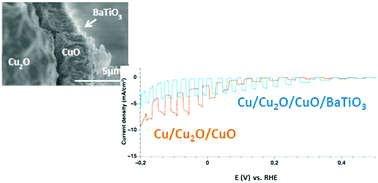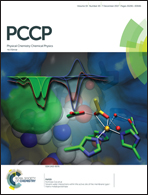Engineering n–p junction for photo-electrochemical hydrogen production†
Abstract
The generation of hydrogen from water and sunlight offers a promising approach for producing scalable and sustainable carbon free fuels. One of the challenges of solar-to-fuel technology is the design of efficient, long-lasting and low-cost photocathodes, which are responsible for absorbing sunlight and driving catalytic hydrogen evolution. We report on the protection of a Cu/Cu2O/CuO photoelectrode against photocorrosion by a 200–300 nm-thick BaTiO3 perovskite layer, deposited using the sol–gel method. This photoelectrode mediates H2 production with a current density of ∼3.1 mA cm−2 at 0 V versus RHE under 3 Sun irradiation and in a pH = 6 aqueous electrolyte. While the unprotected Cu/Cu2O/CuO photoelectrodes show a rapid decay of activity, the BaTiO3-protected photoelectrodes exhibit ∼10% current decay over 20 min.



 Please wait while we load your content...
Please wait while we load your content...